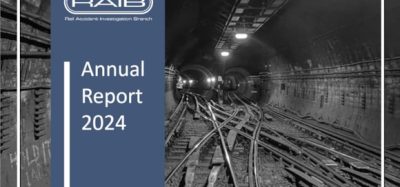By 2023, the Australasian rail sector could have a workforce gap of 70,000 people
Posted: 27 November 2018 | Global Railway Review | No comments yet
The ARA engaged BIS Oxford Economics to undertake a workforce capability analysis for the rail industry based on planned and forecasted rail infrastructure development.


According to BIS Oxford Economics Pty Ltd, in a report commissioned by the Australasian Railways Association (ARA), a fast-developing skilled labour crisis in the rail sector will deliver a substantial blow out in project costs and delivery delays to rail projects in Australia and New Zealand over the next 10 years.
ARA CEO, Danny Broad, said: “The report is a call to action to government and industry. Immediate corrective action to fill skills gaps with fit-for-purpose training is needed to avoid this surge.
“Investment of over $100 billion in rail projects by Australian governments over the next 10 years will be undermined by shortages of skilled labour that dramatically impact the construction of new rail systems, and our capacity to operate them.”
Danny continued: “The next 10 years will herald a renaissance of rail in Australia, including important urban passenger projects, multiple light rail infrastructure and rolling stock investment as well as crucial freight projects such as Inland Rail, which will provide a direct freight link from Brisbane to Melbourne.
“Unless we address shortages due to market failure, attrition and unsuitable training arrangements, projects will blow out in terms of delivery and cost.
“Modelling shows that in 2023, the peak of the construction phase, we may have workforce gaps of up to 70,000 people.”
The report has recommended the establishment of a high level taskforce of government, industry and education providers with a three-pronged focus:
- Facilitate the development and maintenance of an Australasian Rail Industry Pipeline of rail projects to map skilled labour required across construction, manufacturing, operations and maintenance. The ANZIP pipeline, established by Infrastructure Partnerships Australia, which enjoys financial backing from both the Australian and NZ governments, should be adapted and refined for this purpose.
- Develop a National Rail Industry Skills Development Strategy to drive reform in education and training systems and practices that increase the availability of required skills, their productivity, transferability and mobility while retaining a commitment to quality and safety.
- Boost awareness and attraction of rail careers. The need to attract skills and career aspirants to the rail industry is widely recognised. Industry has a significant responsibility in this regard. The taskforce should add its weight to initiatives such as establishing ‘branding partnerships’ with related industries across transport, mining and manufacturing.
The ARA engaged BIS Oxford Economics to undertake a workforce capability analysis for the rail industry based on planned and forecasted rail infrastructure development in Australia and New Zealand over the next 10 years, with implications for a range of rail industry skills across construction, manufacturing, operations and maintenance.
Through expansive stakeholder and industry engagement and extensive data analytics, the report explores skills shortages over the coming decade, key threats to workforce capability, and what government and industry can do to respond to meet the challenges of delivering on the significant rail infrastructure and rolling stock investment.
Related topics
Infrastructure Developments, Regulation & Legislation, The Workforce, Training & Development








